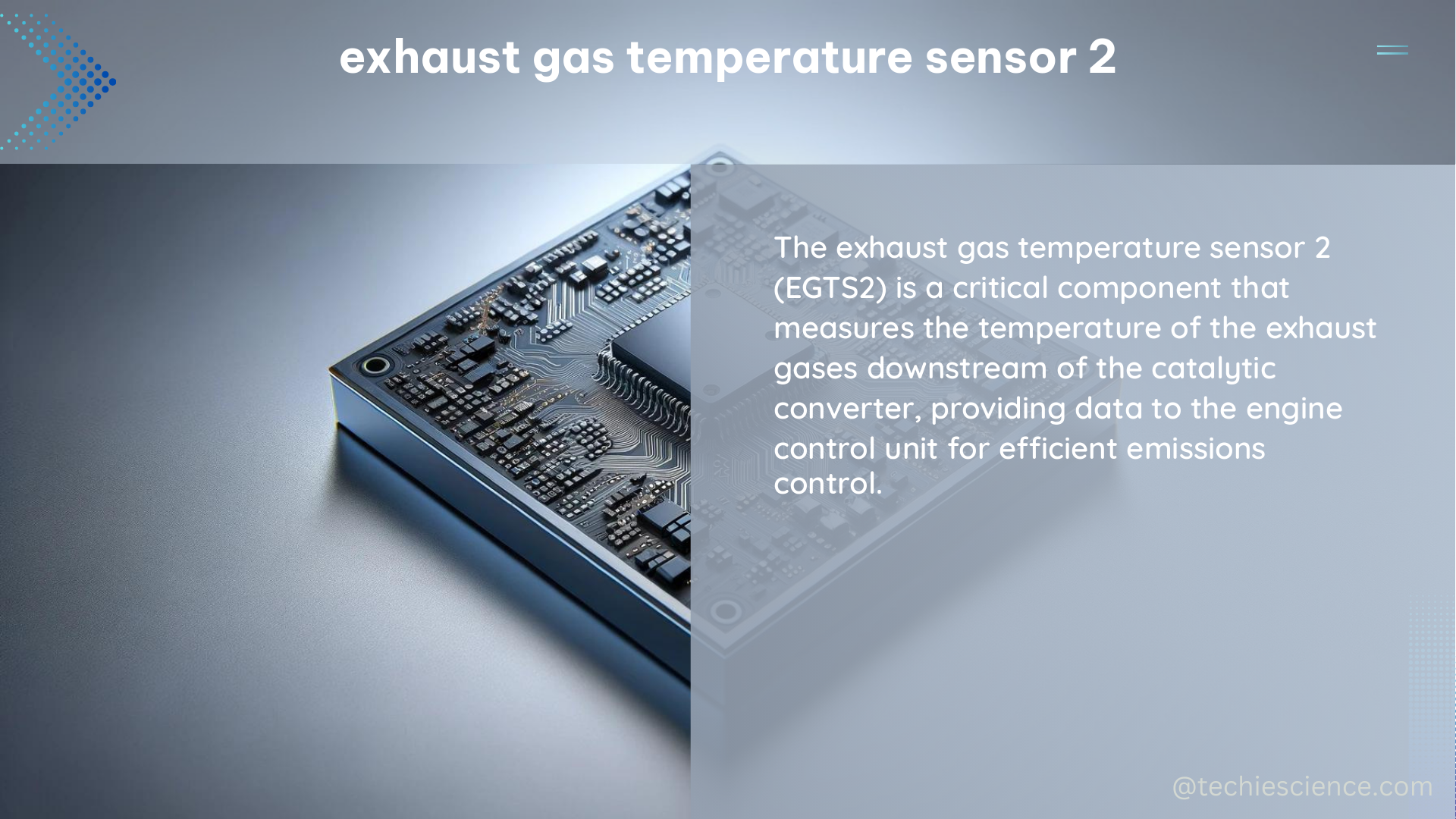The Exhaust Gas Temperature (EGT) sensor, specifically the sensor 2, is a critical component in modern diesel engines, particularly those with Diesel Particulate Filters (DPFs). It measures the temperature of the exhaust gases before and after they go through the selective catalytic reduction (SCR) system, playing a crucial role in controlling the emission levels of a diesel vehicle.
Understanding the EGT Sensor 2
The EGT sensor 2 is a type of resistance temperature detector (RTD), which means its electrical resistance changes in proportion to the temperature of the exhaust gas. As the temperature of the exhaust gas increases, the electrical resistance of the sensor increases, and vice versa. This change in resistance is used by the engine control unit (ECU) to monitor and regulate the temperature of the exhaust system.
Sensor Types and Characteristics
There are two main types of resistors used in EGT sensors: Negative Temperature Coefficient (NTC) and Positive Temperature Coefficient (PTC) resistors.
NTC Resistors:
– Resistance decreases as temperature increases
– Commonly used in EGT sensors
– Typical resistance range: 1 kΩ to 10 kΩ at 25°C
PTC Resistors:
– Resistance increases as temperature increases
– Less common in EGT sensors
– Typical resistance range: 100 Ω to 1 kΩ at 25°C
The EGT sensor 2 is designed to operate within a wide temperature range, typically from -40°C (-40°F) to 800°C (1472°F). The sensor’s output signal is a variable resistance that is measured by the ECU and converted into temperature information using a specific algorithm.
Sensor Integration and Operation
The EGT sensor 2 is directly connected to the ECU, forming a series connection with another resistor (RUP) within the control unit. This voltage divider circuit allows the ECU to measure the sensor’s resistance and, in turn, the exhaust gas temperature.
The ECU uses the EGT sensor 2 data to:
– Monitor the temperature of the DPF during the regeneration process
– Adjust the fuel injection and timing to optimize engine performance and emissions
– Detect any malfunctions or failures in the exhaust system
Exhaust Gas Temperature Sensor 2 Diagnostics

In the event of a faulty EGT sensor 2, the ECU may switch to an emergency operation mode or use a substitute value to protect the relevant components from overheating. This will trigger an error code and illuminate the warning lamp on the dashboard.
Testing the EGT Sensor 2
To test the EGT sensor 2, you can use a multimeter to measure the sensor’s resistance at various ambient temperatures. Follow these steps:
- Disconnect the sensor from the ECU to isolate it from the control unit.
- Set your multimeter to the resistance (Ω) setting.
- Touch the multimeter probes to the sensor’s leads.
- Observe the resistance reading and compare it to the manufacturer’s specifications.
- For NTC sensors, the resistance should decrease as the temperature increases.
- For PTC sensors, the resistance should increase as the temperature increases.
- If the resistance does not change as expected, the sensor may be faulty and need to be replaced.
Sensor Replacement and Calibration
When replacing an EGT sensor 2, it’s important to ensure that the new sensor is compatible with your vehicle’s make, model, and engine. Additionally, some vehicles may require the ECU to be recalibrated or reprogrammed to recognize the new sensor.
Consult your vehicle’s service manual or contact the manufacturer for specific instructions on EGT sensor 2 replacement and calibration procedures.
Advanced Considerations
For more advanced diagnostics or troubleshooting, you may need to use specialized tools, such as a scan tool or an oscilloscope, to analyze the sensor’s signal and identify any potential issues.
Additionally, some vehicles may have multiple EGT sensors, including sensor 1 and sensor 2, which work together to provide a more comprehensive monitoring of the exhaust system.
Conclusion
The EGT sensor 2 is a critical component in modern diesel engines, particularly those with DPFs. It plays a crucial role in controlling the emission levels of a diesel vehicle by monitoring the temperature of the exhaust system. Understanding the technical specifications, operation, and diagnostic procedures for the EGT sensor 2 is essential for maintaining and troubleshooting diesel engine systems.
References:
- EGT Sensors: Everything You Need to Know (and Then Some)
- P2471 Code: Exhaust Gas Temperature Sensor Circuit High Bank 1 Sensor 4
- Checking the exhaust gas temperature sensor
- EGT Sensor Issues

The lambdageeks.com Core SME Team is a group of experienced subject matter experts from diverse scientific and technical fields including Physics, Chemistry, Technology,Electronics & Electrical Engineering, Automotive, Mechanical Engineering. Our team collaborates to create high-quality, well-researched articles on a wide range of science and technology topics for the lambdageeks.com website.
All Our Senior SME are having more than 7 Years of experience in the respective fields . They are either Working Industry Professionals or assocaited With different Universities. Refer Our Authors Page to get to know About our Core SMEs.